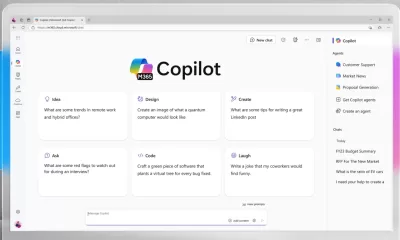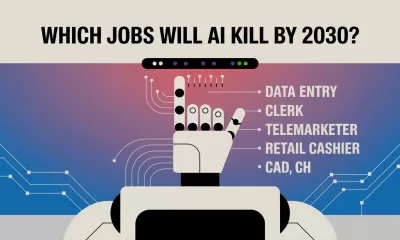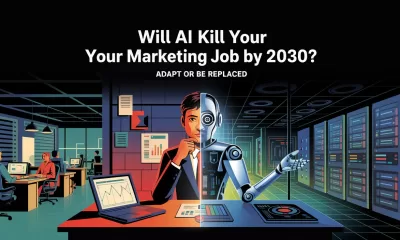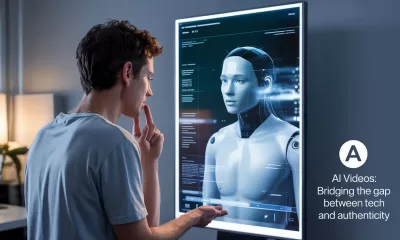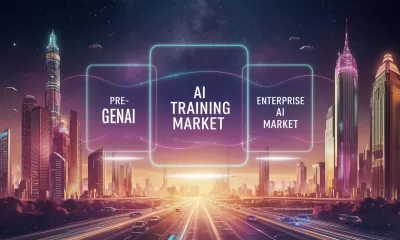Business
Everyday Hacks with Google and Microsoft AI Tools
Learn how AI productivity tools like Gemini and Copilot are transforming everyday workflows—and why a human touch still matters.
Published
3 months agoon
By
AIinAsia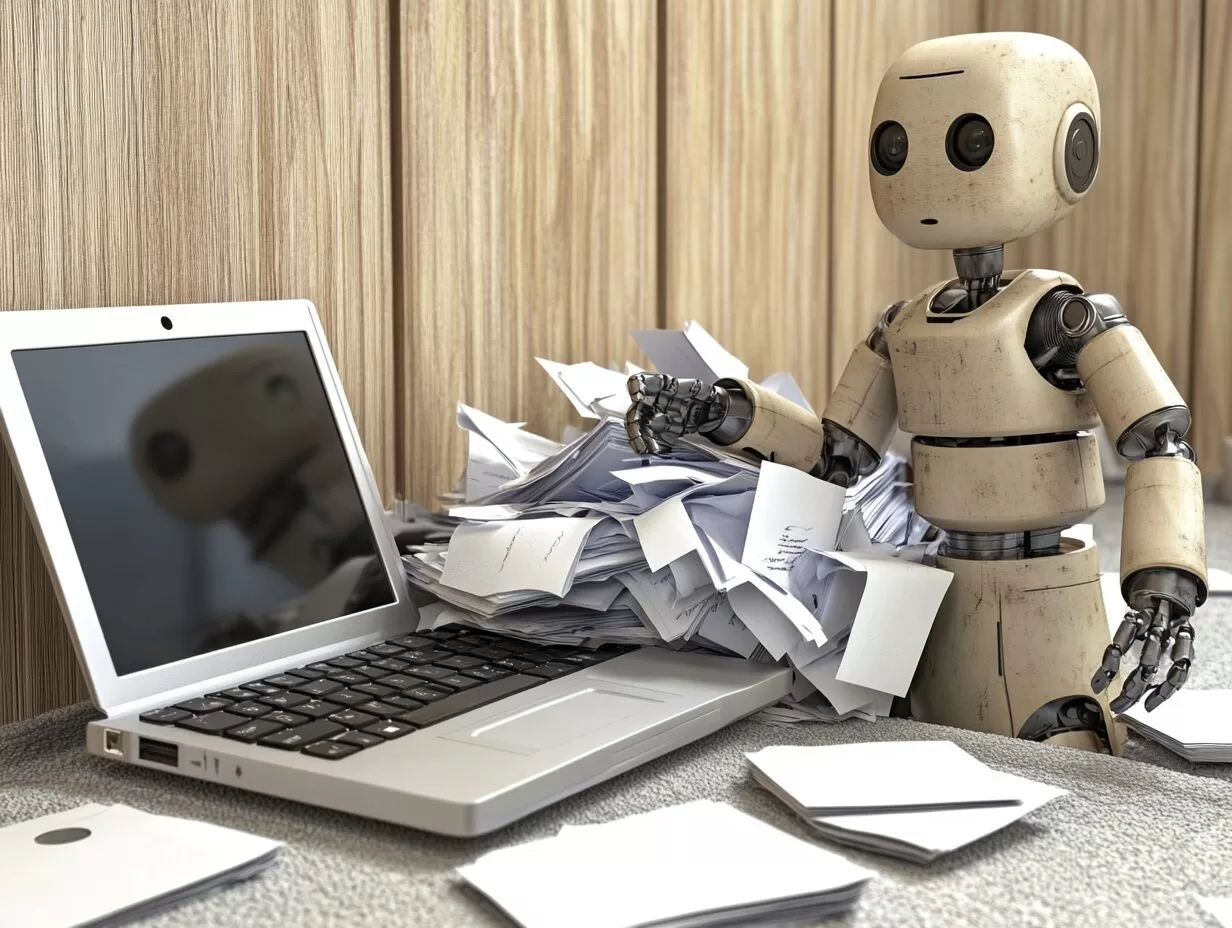
TL;DR
- Google’s Gemini and Microsoft’s Copilot are reshaping productivity with advanced AI features integrated into their suites.
- Gemini offers features like email summarisation, smart replies, and data analysis through Google Workspace, starting at $20 per user/month.
- Copilot, integrated into Microsoft 365, helps with document drafting, meeting automation, and data visualisation, starting at $30 per user/month.
- Both tools are designed to streamline repetitive tasks, improve collaboration, and spark creativity.
Embracing AI Productivity Tools In Your Daily Workflows
If you’ve ever wished for a workday where you can skip the admin grind and focus on the good stuff—creative ideas, strategy, and, dare I say it, an actual lunch break—Google’s Gemini and Microsoft’s Copilot are here to make it happen. These AI productivity tools are redefining how we work, play, and (let’s be honest) survive in today’s fast-paced, tech-driven world. Let’s explore how they’re transforming workflows and what’s in it for you.
Gemini: Google’s AI Assistant for Productivity Bliss
Launching in January 2025, Google’s Gemini is set to become the ultimate assistant for users of Google Workspace (yes, that’s what used to be G Suite). With AI weaved into Gmail, Docs, Sheets, Slides, and even Meet, Gemini aims to make the everyday less tedious and a whole lot smarter.
Gemini’s Features You’ll Actually Use
- In Gmail: Writing emails? Gemini can do it for you. Endless threads? Summarised. Replies? Smart and context-aware.
- In Google Docs: It’s like having a co-writer on speed dial, helping draft, summarise, or even whip up images for your content.
- In Google Sheets: Need data entered or trends spotted? Gemini has you covered with its enhanced Smart Fill feature.
- In Google Slides: Presentation nerves? Gemini’s image creation and background removal tools ensure your slides look the part.
- In Google Meet: From automatic note-taking to real-time translated captions, meetings just got a lot less exhausting.
Subscription Plans
- Gemini Business: $20 per user/month with basic features and usage limits.
- Gemini Enterprise: $30 per user/month, giving you premium features and more elbow room to explore Gemini’s capabilities.
Why Gemini Stands Out
As Upcurve Cloud says, Gemini doesn’t just help you “get things done”—it’s about doing them better. Whether it’s cutting through email chaos or polishing your next big presentation, Gemini’s AI helps you reclaim time for what matters. Bonus points for Google’s enterprise-grade security keeping your data safe.
Real-World Example: Gemini as a Productivity Tool
Creospark has many examples of using Copilot, such as Adore Me, a lingerie and sleepwear company, has leveraged Gemini to dramatically reduce the time spent on content creation—reducing over 35 hours of work creating product descriptions to just 30 minutes using Gemini, illustrating Gemini’s powerful capability to automate and accelerate content generation tasks, resulting in substantial time savings for e-commerce businesses.
Microsoft Copilot: The AI Powerhouse for Work Smarts
Not to be outdone, Microsoft has embedded Copilot into its Microsoft 365 ecosystem, turning apps like Word, Excel, PowerPoint, and Teams into supercharged productivity hubs. If you’ve ever dreamt of an assistant who “just gets it”, Copilot is the next best thing.
What Copilot Brings to the Table
- In Word: Copilot drafts, edits, and summarises like a champ, cutting hours off document creation.
- In Excel: Data insights? Charts? Done and done. Let Copilot turn rows of numbers into actionable insights.
- In PowerPoint: Presentations are no longer a slog—Copilot suggests content, designs, and layouts tailored to your needs.
- In Outlook: It sorts your inbox, drafts replies, and highlights what actually matters.
- In Teams: Catch-up summaries, action items, and real-time transcription make meetings less painful.
Subscription Options
- Commercial Plans: $30 per user/month for enterprises and large teams.
- Personal Plans: A modest $3/month price hike adds Copilot to Microsoft 365 Personal and Family subscriptions.
The Copilot Advantage
Copilot doesn’t just automate—it elevates. Imagine crafting a polished report in minutes or summarising a day’s worth of meetings at the click of a button. With its seamless integration across Microsoft 365 apps, Copilot ensures everything is right where you need it, when you need it.
Real-World Example: Copilot as a Productivity Too
Hargreaves Lansdown, a financial services company, has successfully used Copilot to streamline their workflow—financial advisers used Copilot to generate meeting summaries and annual review reports for clients, streamlining their workflow, demonstrating how Copilot can significantly improve efficiency in document creation and client communication in the financial sector.
The Real Impact of AI Productivity Tools
Both Gemini and Copilot are more than just fancy add-ons; they’re reshaping how work gets done. These AI tools are tackling the biggest pain points in the modern workplace:
- Saving Time: Whether summarising emails or automating reports, these tools free up hours in your day.
- Enhancing Creativity: With AI handling the grunt work, you can focus on big ideas and polished results.
- Improving Collaboration: From shared notes to instant insights, teams work better together.
- Boosting Decision-Making: Advanced data analysis gives you the insights you need to act fast.
A Word of Caution: Trust but Verify
AI tools like Gemini and Copilot can supercharge your productivity, but they’re not infallible. While they’re brilliant for handling the grunt work, they’re no replacement for human oversight and judgement.
Why Double-Checking Matters
- Accuracy: AI-generated outputs can occasionally misinterpret context or make errors.
- Appropriateness: AI doesn’t always understand nuances like brand voice, cultural sensitivity, or workplace-specific policies.
- Over-Reliance: Depending solely on AI may reduce your own engagement with the material, leading to missed opportunities or oversights.
Practical Tips for Responsible AI Use
- Review Outputs Carefully: Always double-check AI-generated summaries, drafts, or data visualisations before sharing or implementing them.
- Add the Human Touch: Make edits to ensure the content aligns with your goals, tone, and audience.
- Use AI as a Starting Point: Let the AI handle the groundwork, but refine the output with your expertise.
- Train AI Over Time: Where possible, provide feedback to improve the tool’s understanding of your preferences.
By staying engaged and bringing a human touch to AI-generated content, you can ensure your work remains accurate, professional, and impactful.
What’s Next? The AI Productivity Revolution
AI tools like Gemini and Copilot are undoubtedly paving the way for smarter, more efficient workplaces. But let’s remember that these tools are here to complement human skills, not replace them. By using AI responsibly—embracing its strengths while applying critical judgement—we can unlock its full potential without sacrificing quality or trust.
Your Turn
How do you strike the balance between relying on AI and adding your personal touch? Do you think we risk becoming too dependent on these tools? Share your thoughts in the comments below—we’d love to hear your perspective!
And don’t forget to subscribe for updates on AI and AGI developments here. Let’s build a community of tech enthusiasts and stay ahead of the curve together!
You may also like:
- Gemini Rising: Google’s Advance AI Game Changer
- Google Gemini: How To Maximise Its Potential
- Revolutionise Your Spreadsheets: 5 Ways to Up Your Excel Game with Microsoft Copilot
- Revolutionise Your PowerPoint Presentations with Copilot in Minutes
Author
Discover more from AIinASIA
Subscribe to get the latest posts sent to your email.
You may like
Business
Will AI Take Your Job—or Supercharge Your Career?
AI-driven job disruption is already here. Discover practical steps for workers in Asia to stay employable, relevant, and ready for the future.
Published
2 weeks agoon
April 9, 2025By
AIinAsia
TL;DR – What You Need to Know in 30 Seconds
- Generative AI is already reshaping careers, causing job losses in industries from finance to creative roles.
- Workers must continually upskill, strategically plan career moves, and focus on roles AI complements rather than replaces.
- Companies and governments must significantly increase retraining efforts to help workers adapt effectively.
Is AI About to Steal Your Job? Here’s How to Stay Ahead in Asia
For many, AI started as a helpful assistant for menial tasks, quick research, or even generating funny memes. But today, it’s taking a serious turn, reshaping industries, displacing jobs, and changing careers overnight.
Just ask Jacky Tan. After thriving for over 15 years as a freelance marketing consultant in Singapore, Jacky found his livelihood disrupted—not just by the pandemic—but by generative AI tools like ChatGPT, which empowered his clients to produce their own content. The result? Jacky, along with countless others, faced a stark choice: adapt quickly or risk becoming obsolete.
Jacky pivoted completely, leaving marketing to open a successful home-based food business, CheekyDon, specialising in Japanese rice bowls. But not everyone can—or will—reinvent themselves so easily. As AI continues to infiltrate the workforce, what can you do to ensure you’re prepared?
Job Disruption: More Real Than Ever
It’s no longer theoretical. Meta, ByteDance, DBS Bank, Grab, and Morgan Stanley have all announced layoffs or workforce reshuffling directly linked to AI-driven efficiencies. Analysts predict as many as 200,000 banking jobs globally could vanish within five years due to AI, highlighting sectors like finance, customer service, risk management, and tech as especially vulnerable.
The numbers don’t lie: The World Economic Forum anticipates 11 million new AI-related jobs globally by 2030—but 9 million existing roles will disappear. And the shift won’t just hit repetitive tasks. Highly skilled roles like writers, programmers, PR professionals, and even legal experts face substantial disruption.
Why AI Displaces Jobs—and Creates New Ones
Here’s the paradox: while AI promises increased productivity, it often leads to job losses because current skills don’t match the needs of new AI-augmented roles. Retraining existing workers is crucial but challenging. In places like Singapore, where skilled workers are scarce, companies struggle to balance the speed of AI integration with retaining talent.
The good news? Jobs involving deep human interactions, emotional intelligence, strategic thinking, or managing AI tools themselves remain safer—for now.
How to Stay Relevant in an AI-Dominated Market
So, how can you protect your career from being displaced by AI? Here are actionable steps tailored for the rapidly shifting Asian job market:
1. Continuous Upskilling Is Non-Negotiable
The days of one-off training are over. Commit to lifelong learning by acquiring skills in AI-related fields, from data analytics to AI management tools. Invest in soft skills—like critical thinking, empathy, and strategic communication—which AI struggles to replicate effectively.
2. Proactively Plan Your Next Career Move
Ask yourself, as EY’s Samir Bedi suggests: “What am I upskilling for?” Plan two or three career steps ahead, not just for immediate skill gaps. Explore lateral career transitions that diversify your skillset, making you versatile across industries.
3. Look for Roles Complemented by AI, Not Replaced by It
Jobs with tasks AI can augment rather than entirely replace—like managing automated systems, strategic marketing, or roles that require significant human touchpoints—are safer bets.
Employers Must Step Up, Too
The responsibility doesn’t rest solely on workers. Companies must actively retrain employees to handle AI disruptions effectively. Currently, only around half of Singaporean workers feel their employers provide sufficient training opportunities. Organisations that actively support their teams through retraining will reap long-term rewards, maintaining both institutional knowledge and market reputation.
Asia’s Workforce at the Crossroads
We’re facing nothing less than the Fourth Industrial Revolution, driven by generative AI. Unlike previous waves of automation, AI can replace tasks once thought too complex or creative for machines. But remember, while AI might take your current role, it also opens doors to entirely new career paths—provided you’re ready to step through them.
Are you prepared to let AI shape your future—or will you shape your own future with AI? Let us know in the comments below!
You may also like:
- Young Workers are Embracing ChatGPT
- 10 ChatGPT Prompts to Ignite Your Business Evolution
- You can also learn more at Singapore’s SkillsFuture by tapping here.
Author
Discover more from AIinASIA
Subscribe to get the latest posts sent to your email.
Business
The Three AI Markets Shaping Asia’s Future
Explore the three interconnected AI markets shaping Asia’s technological landscape—traditional AI, training infrastructure, and enterprise solutions—and discover how each drives innovation.
Published
2 weeks agoon
April 6, 2025By
AIinAsia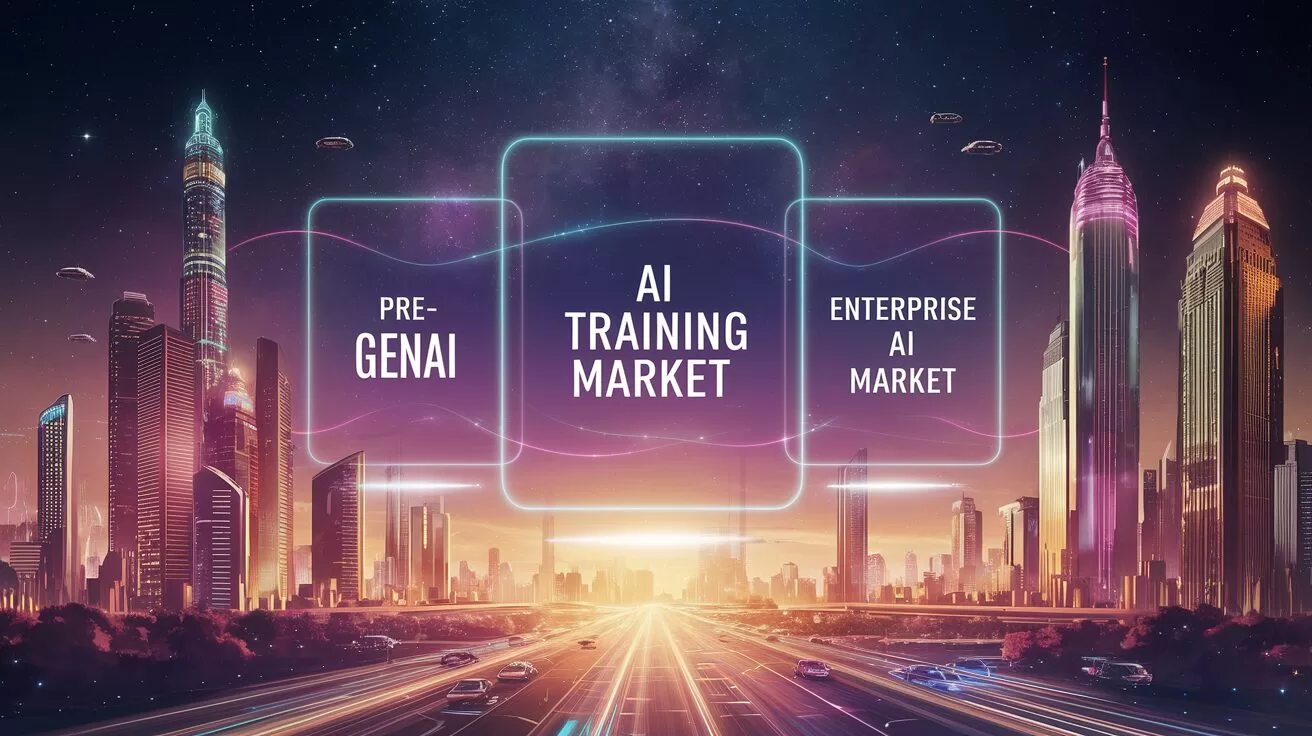
TL;DR – What You Need to Know in 30 Seconds
- AI isn’t one monolithic market—it’s three interconnected segments:
- 1. Pre-GenAI (traditional AI): Fundamental techniques that underpin data-driven solutions.
- 2. AI Training Market: Resource-intensive frontier models driving the next AI breakthroughs.
- 3. Enterprise AI Market: Real-world applications delivering measurable business outcomes.
- Understanding their interplay is critical for Asian businesses aiming to maximise ROI from AI investments.
Are We Missing the Bigger Picture in the AI Race?
From smarter chatbots to insightful analytics, AI’s not one market—it’s three interconnected ones, each shaping how Asia leverages technology.
If you’ve spent any time recently skimming headlines about artificial intelligence, you’d be forgiven for thinking that generative AI is the only show in town. But AI isn’t just ChatGPT, Midjourney, or flashy avatars of celebrities endorsing your new favourite tech gadget. Behind the scenes, three distinct but intertwined markets are at play: the Pre-GenAI Market, the Training Market, and the Enterprise AI Market.
But what exactly are these three markets, and why should Asian businesses care?
Let’s unpack them one by one and understand how they converge to drive the future of innovation across Asia.
1. The Pre-GenAI Market: The Building Blocks of AI
Generative AI may be the current media darling, but the roots of AI go far deeper. We’re talking about traditional AI—technologies like machine learning (ML), reinforcement learning, and computer vision. These foundational techniques have been quietly evolving for decades, long before ChatGPT ever typed out its first response.
Contrary to popular belief, traditional AI hasn’t lost its relevance—far from it. In fact, the rise of generative AI has amplified its importance. Why? Because generative AI feeds on data often produced by traditional AI methods. For instance, Dell Technologies frequently uses machine learning to streamline supply chains or improve factory efficiency. These methods don’t get less important just because GPT-5 is around the corner—they become essential.
In short, traditional AI is like rice in Asian cuisine—fundamental, reliable, and always necessary, no matter what fancy new dish appears on the menu.
2. The Training Market: Powering AI’s Frontier
Next up is the AI training market—think of it as AI’s heavy lifting division. This market is dominated by big names you’ll recognise (OpenAI, Google DeepMind, Nvidia, Meta) who are making gigantic investments in infrastructure to create foundational AI models. Picture rows and rows of servers, massive GPU clusters, and sprawling data centres, humming 24/7.
These frontier models—like GPT-4 or Gemini—require immense computational resources. This isn’t just about bragging rights; it’s about pushing the boundaries of what AI can do. The innovations here spill directly into practical tools businesses use every day, like AI-driven coding assistants or creative platforms for content creation.
In Asia, we’re seeing heavy investment in this market too. Take Singapore’s AI supercomputing initiatives or China’s Baidu and Alibaba building mega-AI clusters. These moves aren’t just technological vanity—they’re strategic investments in the future.
3. The Enterprise AI Market: Real-World Results
And then there’s the enterprise AI market, arguably the most pragmatic of the three. Enterprises aren’t racing to build the next ChatGPT killer. Instead, they’re laser-focused on AI that solves real business problems—like optimising inventory management, enhancing customer support, or boosting marketing effectiveness.
Unlike the flashy training market, the enterprise market moves slower but deliberately. Enterprises demand reliability, compliance, and measurable outcomes—exactly the opposite of the ‘move fast and break things’ mentality we see in frontier AI research.
Across Asia, the enterprise AI market is thriving precisely because it offers clear returns. Banks in Indonesia deploy AI-driven chatbots to handle customer queries efficiently. E-commerce giants in Vietnam and Thailand integrate predictive analytics to forecast inventory and customer demand. It’s AI that’s practical, measurable, and directly linked to ROI.
How These AI Markets Interconnect
Here’s the real takeaway: These three markets aren’t isolated islands; they’re deeply interconnected ecosystems.
Traditional AI gathers and prepares the essential data. The training market produces foundational AI models and cutting-edge tech innovations. Enterprises then integrate both, using these tools and data to transform operations and customer experiences.
Think about it this way: traditional AI builds the roads, the training market crafts powerful engines, and the enterprise market drives the cars, delivering real-world value. Without any one of these, the system falters.
For instance, enterprises use AI-powered data agents to analyse massive datasets prepared by traditional AI methods. They then leverage frontier AI models (like generative AI) trained in data centres to extract actionable insights. The whole system is interdependent—each component driving progress in the other.
Why Does This Matter to Asia?
Asia is a unique melting pot of digital maturity, economic growth, and competitive intensity. Understanding these three markets isn’t just academic—it’s crucial for businesses looking to harness AI’s full potential.
For instance, enterprises in Southeast Asia’s rapidly expanding digital economy (expected to hit $263 billion GMV by 2025 according to Google’s recent e-Conomy SEA 2024 report) need practical AI solutions that deliver immediate business value. On the other hand, countries like Singapore, South Korea, and Japan are leading investments into the training market, building the infrastructure needed to power Asia’s next generation of AI innovations.
Simply put, knowing how these three AI markets interact helps Asian businesses invest smarter, act faster, and innovate effectively.
As we look ahead, Asia is uniquely positioned to benefit from understanding this AI ecosystem deeply. Whether you’re in manufacturing, finance, e-commerce, or healthcare, your business will inevitably interact with all three markets—whether you realise it or not.
Now, here’s something for you to ponder (and comment below!):
Which of these AI markets do you think will dominate Asia’s tech landscape by 2030? Will traditional methods endure, frontier models take over, or will enterprise solutions reign supreme?
We’d love to hear your thoughts.
You may also like:
- A Cautionary Tale for Asian Enterprises
- Accenture and Nvidia’s AI Power Play in Asia
- Perplexity’s Deep Research Tool is Reshaping Market Dynamics
- Learn more by tapping here.
Author
Discover more from AIinASIA
Subscribe to get the latest posts sent to your email.
Business
Embrace AI or Face Replacement—Grab CEO Anthony Tan’s Stark Warning
ChatGPT now generates previously banned images of public figures and symbols. Is this freedom overdue or dangerously permissive?
Published
2 weeks agoon
April 3, 2025By
AIinAsia
TL;DR – What You Need to Know in 30 Seconds
- Grab CEO Anthony Tan believes workers and companies that don’t embrace AI risk being replaced by those who do.
- Grab paused normal operations for a nine-week generative AI sprint, significantly boosting innovation.
- AI tools developed by Grab, such as driver and merchant assistants, are empowering everyday entrepreneurs.
- Globally, many companies are downsizing due to AI, but Tan insists AI enhances human capabilities rather than replacing them.
Is Your Refusal to Embrace AI Secretly Sealing Your Fate?
Anthony Tan, co-founder and CEO of Grab—the Southeast Asian super-app that transformed regional transport, food delivery, and financial services—has made a bold and slightly unsettling prediction: “Humans who don’t embrace AI will be replaced by humans who embrace AI.”
In other words, whether you’re a company or an individual, ignoring AI isn’t merely shortsighted—it’s career suicide.
But before we panic, what exactly does Tan mean?
Making Humans ‘Superhuman’
Speaking at Converge Live in Singapore, Tan explained to CNBC’s Christine Tan that AI isn’t just a fancy tech upgrade. Instead, it’s a crucial tool to “make you superhuman” by significantly boosting productivity and freeing up valuable time.
Tan himself isn’t just preaching—he’s practising. Despite not being a coder, he’s enthusiastically using AI coding assistants for personal and professional projects. He claims AI has radically changed his productivity, helping him accomplish things previously impossible.
I can’t code myself, but I use AI to build my own projects, for research, for Grab,” Tan explained. “It totally changes how you spend your time.
Grab’s Radical AI Experiment
Grab didn’t stop at encouraging individual AI adoption. Instead, the company took it to a whole new level, implementing an ambitious, company-wide nine-week “generative AI sprint”.
This meant putting all regular business on pause to explore AI-driven solutions across the entire company. As Tan humorously admitted:
People thought I was crazy—maybe I am—but it really moved the needle.
During this sprint, Grab developed powerful AI tools, including:
- Driver Co-pilot: An AI assistant reducing wait times and boosting job opportunities for drivers.
- Merchant AI Assistant: Imagine a single mother in Jakarta now equipped with an AI-driven sous chef, packaging expert, and even a chief revenue officer—all in one assistant. This innovation isn’t just about efficiency; it’s empowerment, reshaping the livelihoods of Grab’s vast network of entrepreneurs.
The Wider Implications for Asia
This isn’t just a Grab-specific phenomenon. According to the World Economic Forum’s 2025 Future of Jobs Report, 40% of employers globally plan to downsize due to AI, and a whopping 86% anticipate AI reshaping their businesses by 2030.
Asia, in particular, with its digitally fluent workforce and vibrant entrepreneurial scene, stands uniquely poised to lead this transition. Grab’s aggressive AI strategy under Tan’s leadership could become a model for businesses across Southeast Asia, showcasing how AI can be harnessed responsibly and productively.
Human vs AI: Not a Zero-Sum Game
Tan stresses AI shouldn’t evoke fear—it should inspire excitement. AI adoption isn’t about machines replacing humans. It’s about humans becoming irreplaceable by effectively harnessing these tools.
If you’re reluctant or sceptical, Anthony Tan’s message is clear: embrace AI now, or watch as those who do leave you behind.
Hot Take
Anthony Tan might sound dramatic—but he has a point. If you’re not actively exploring AI, you’re preparing yourself (and your company) to become obsolete. The clock is ticking: Will you adapt, or will you become the adaptation?
What do you think?
Are you inspired or intimidated by Anthony Tan’s AI-driven future? Drop your thoughts below!
You may also like:
Grab and OpenAI’s Groundbreaking SEA AI Collaboration
AI Tsunami: Transforming Business Models in Asia
AI Ads Stir Up Conversations: The Future of Marketing in Asia
Ready more about Grab’s AI solutions by tapping here.
Author
Discover more from AIinASIA
Subscribe to get the latest posts sent to your email.

AI Career Guide: Land Your Next Job with Our AI Playbook

Will AI Take Your Job—or Supercharge Your Career?

Can AI Videos Really Boost Your Brand’s Authenticity?
Trending
-

 Business3 weeks ago
Business3 weeks agoCan PwC’s new Agent OS Really Make AI Workflows 10x Faster?
-

 Life3 weeks ago
Life3 weeks agoAI-pril Fools! How AI is Outsmarting Our Best Pranks
-

 Life2 weeks ago
Life2 weeks agoWhich Jobs Will AI Kill by 2030? New WEF Report Reveals All
-

 Life1 week ago
Life1 week agoAI Career Guide: Land Your Next Job with Our AI Playbook
-

 Business2 weeks ago
Business2 weeks agoWill AI Take Your Job—or Supercharge Your Career?
-

 Marketing2 weeks ago
Marketing2 weeks agoWill AI Kill Your Marketing Job by 2030?
-

 Tools2 weeks ago
Tools2 weeks agoCan AI Videos Really Boost Your Brand’s Authenticity?
-

 Business2 weeks ago
Business2 weeks agoThe Three AI Markets Shaping Asia’s Future

